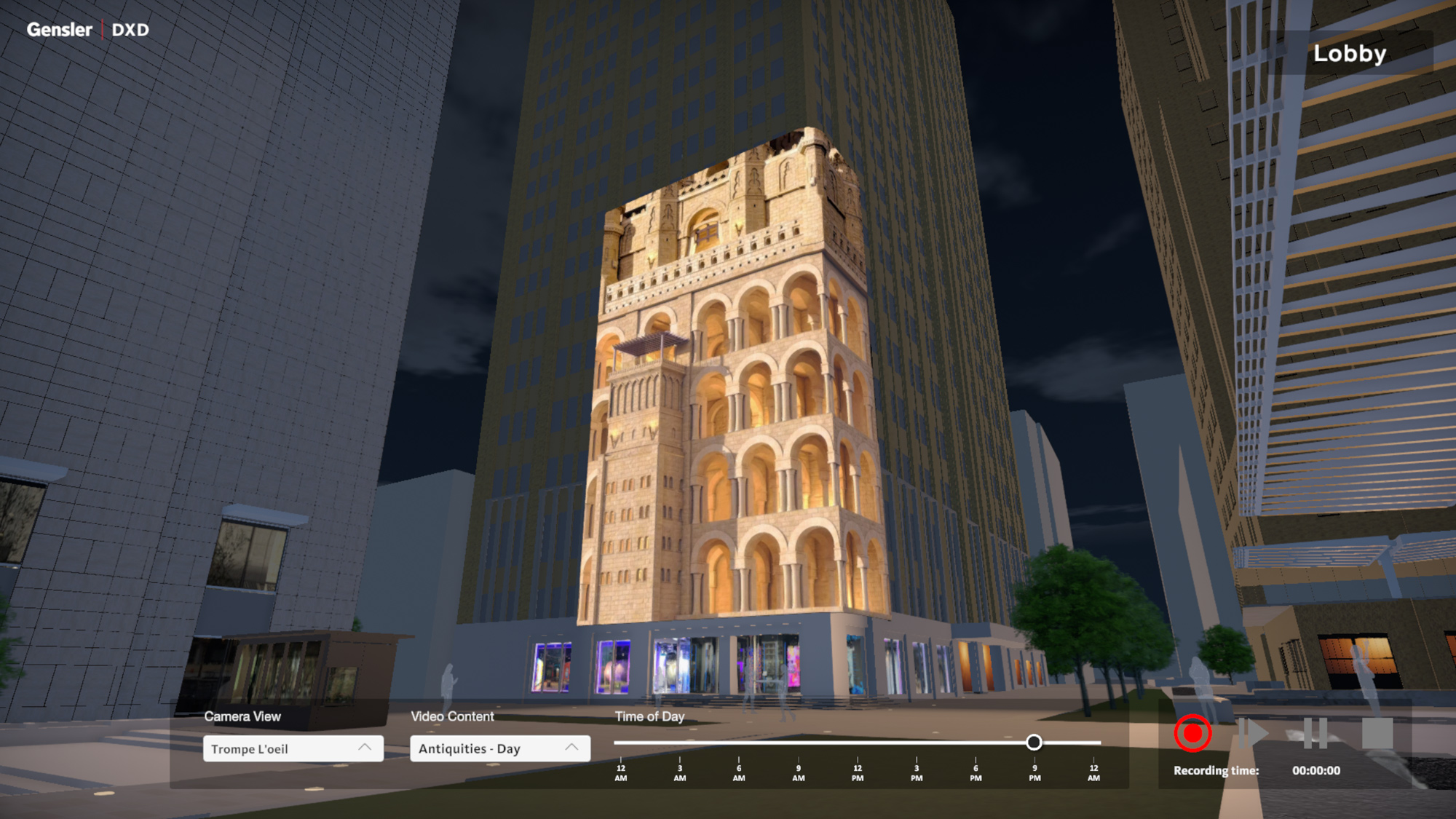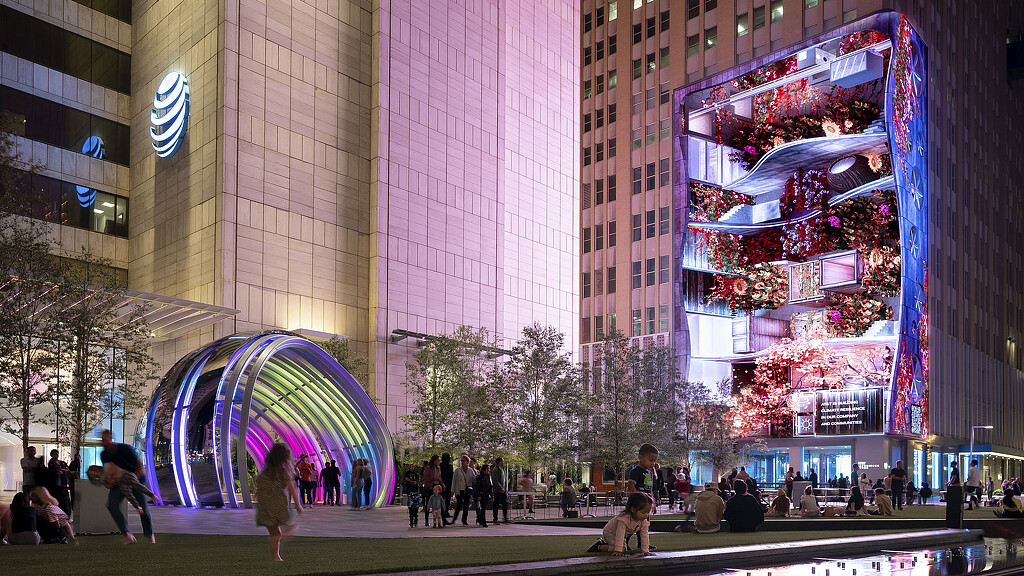Reimagining Digital as an Enhanced Building Material
November 04, 2024 | By Ryan Rowlett
More and more, digital technologies are becoming an integrated component within the fabric of our existence — an extension of ourselves rather than a destination. This atmospheric force seamlessly connects our preferences, decisions, locations, and desires across a network of laptops, phones, wearable devices, and vehicles — and the spaces we inhabit are no different. Through digital enhancement, it’s now possible for spaces to see us, to hear us, and to know in particular who we are and why we are there. The possibilities for spaces that conform to our needs in real-time and assist with everything from tasks to wellness is just beginning to be explored.
As digital becomes more integrated and invisible, we are merging physical and digital experiences to produce meaningful interactions that defy and redefine how digital is considered in the built environment.
A Perfect Partner to Other Materials
Digital can be infused into spaces to produce subtle effects that enhance or add expression to traditionally used building materials. There is an entire genre of emerging products with hardware embedded in natural material. LED-embedded concrete, wood, and glass are all being used to integrate digital into existing materials. New products are appearing on the market regularly that blur the lines between material, artistic display, and animated architecture. We are also custom-creating new solutions by testing layers and juxtapositions of different mixed media. These are especially useful in creating dynamic experiences without losing a natural aesthetic due to traditional digital hardware.
Often, to create a digital expression that doesn’t overpower a space or a user, the Digital Experience Design (DXD) team diffuses the digital source with a translucent material which produces a soft, luminous impression. The diffusion itself can be constructed of natural materials; translucent quartzite and onyx or thinly sliced wood veneer can each mediate light while retaining a completely organic surface.
In our Experience Lab (xLab) in New York, the DXD team is testing variations of LED-embedded wood for use in workplaces, retail spaces, and hospitality environments. From abstract patterns and light to brand expression, this approach to digital as a building material is a beautiful design touch and leaves a lasting impression on visitors.
Mimicking Other Materials
In addition to being embedded in or diffused by natural materials, digital can be designed to mimic other materials with added motion, animation, and multisensory effects. Digital windows or digital skylights can bring nature indoors and solve for physical limitations of spaces with limited natural light.
Another example of blurring digital and physical is a product like switchable glass. This controllable material turns glass from transparent to opaque at the flip of a switch, offering the privacy of a screen or curtain with the magic and dynamism of a transluscent digital surface.
Something digital can do that other materials can’t is flex and tell stories. We can use digital media to deliver information, art, sound, and guidance. The impressions and impact this can drive are immense in the right application.
While traditional digital media, content-driven marketing, and brand messaging and imagery are extremely useful tools in the digital repertoire, more subtle sensory cues and ‘invisible’ technology can cultivate deep emotional reactions that create a respite from the overstimulation we all experience in this digital age. This technique of softening not only creates opportunities to harmonize the digital with its architectural context, but it trades the ultra-high-definition inundation that often defines our relationship with digital media for something more elegant and gentle.
One trend in this application is the use of trompe l’oeil and forced perspective to augment or shift understanding of the space itself.
Digital is so malleable that interventions in the mimicked material’s qualities and dynamic screen content can be a powerful and surprising way to make a space come alive. For many companies and brands, this use of digital as a material expresses appreciation for and embrace of technology and innovation, brand stories that are increasingly relevant to many product and service offerings.
Programming on the AT&T Discovery District’s Media Wall cleverly includes a combination of brand messaging as well as trompe l’oeil effects. The scale and wraparound form of the screen, coupled with unique artistic content, create an effect where the digital creates a dimensionality and dialogue with the entire plaza


Invisible Digital and The Future of Connected Ecosystems
In addition to its malleability in physical space, technology’s role tailoring and personalizing experiences is forcing us to rethink the built environment in fundamental ways. Not only through AI, but also through the interconnectedness of an entire digital ecosystem of your phone, data, badge or RFID technology, facial recognition technology, and more can respond to individual presence with tailored recommendation. In the workplace, this could help drive performance through insights and recommendations based on work patterns. Elsewhere, such as retail or consumer spaces, RFID self-checkout systems create a seamlessly connected shopping experience.
Conceiving digital as a building material is not the same as advocating for more buildings to be considered mannequins for media and advertising canvases. Certainly, there are times where advertising displays are appropriate, beneficial, and beautifully integrated. In a time when we are increasingly bombarded with media, though, we must establish new ways to meld digital and physical for sensitively incorporated experiences and consider where digital can be invisible — where it sparks inspiration and joy, surprises us, and perhaps doesn’t feel “digital” at all.
For media inquiries, email .

